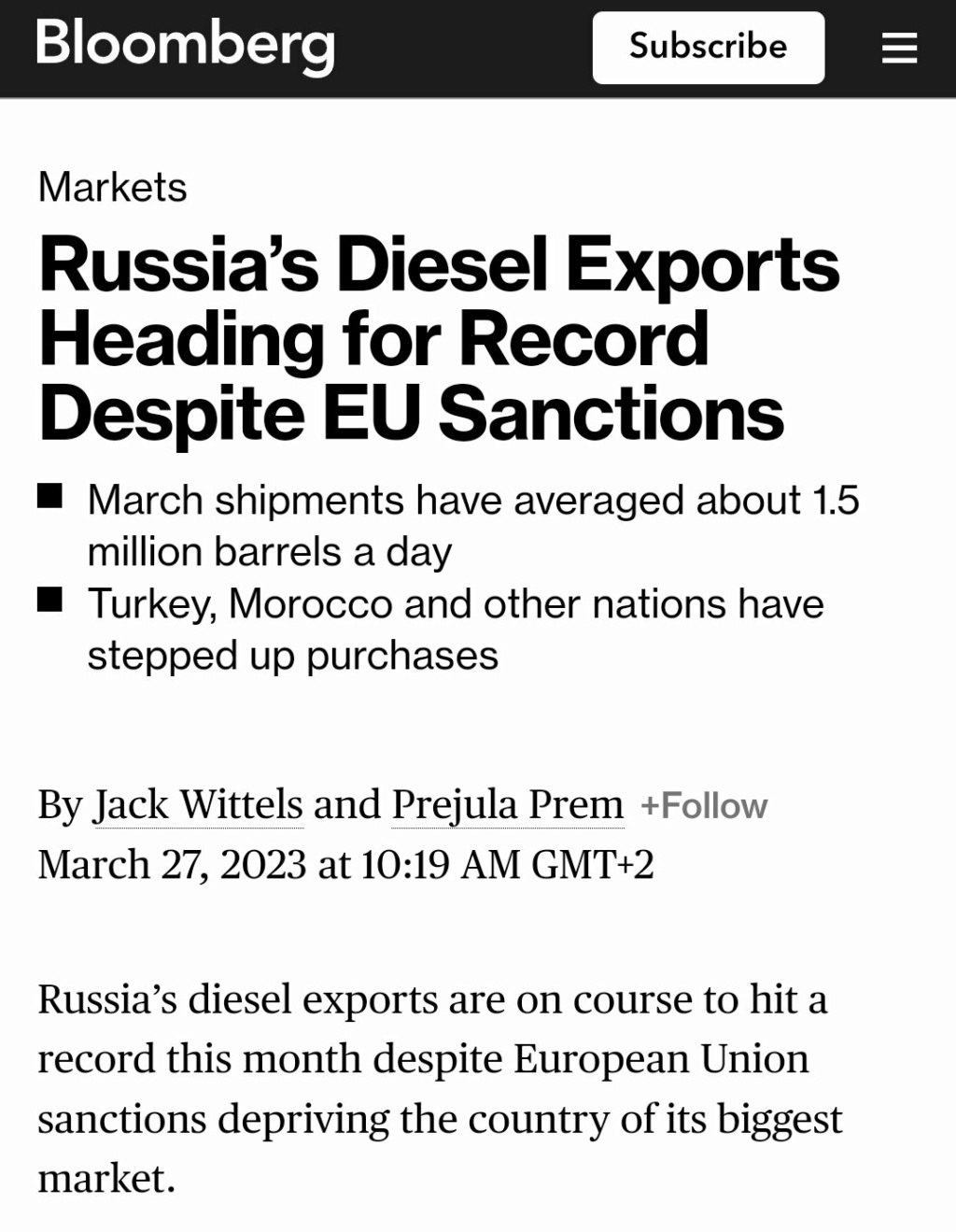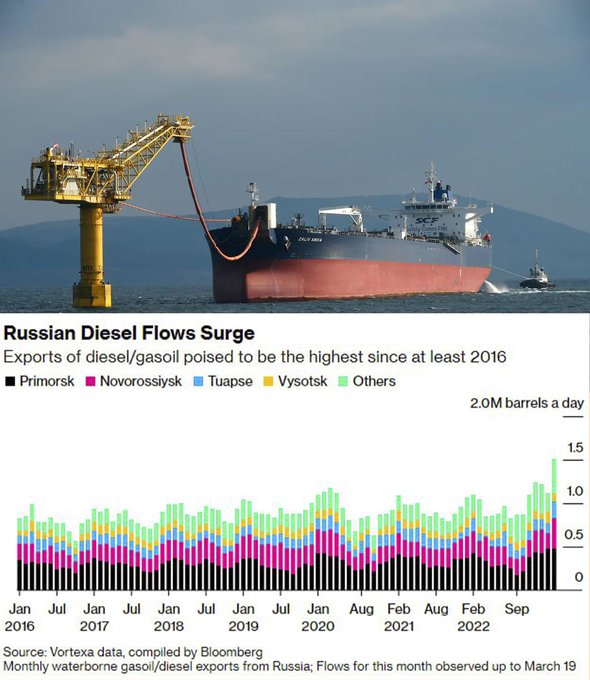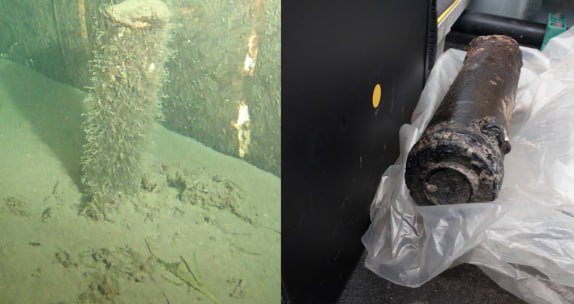Russia rushes to conquer the global LNG market, by Olga Samofalova for VZGLYAD. 03.29.2023.
Russia has set an ambitious goal of producing at least 100 million tons of LNG per year by 2030, despite Western sanctions. This means a threefold increase in LNG supplies to replace the affected pipeline exports to Europe. What difficulties stand in this way for Moscow? And how can the US be of great service to Russia in this regard?
The key task of Russia in the current conditions, when the infrastructure to Europe has suffered, and we have lost a fairly large volume of pipeline gas exports, is to increase the level of production and export of liquefied natural gas (LNG). This statement was made by Deputy Prime Minister of the Russian Federation Alexander Novak at the final board of the Ministry of Energy of the Russian Federation.
According to him, in addition to developing pipeline gas supplies to eastern countries, the LNG market is also actively developing. “We have several projects that have been implemented, there are a number of projects under implementation, such as Arctic LNG 2, Ust-Luga. We need to work on them and help implement them,” Novak says.
Russia's task is to reach the production of at least 100 million tons of LNG per year by 2030. For this, it is necessary, on the one hand, to provide the relevant projects with a resource base, and on the other hand, to ensure independence in terms of production technologies and equipment. Work on this is already underway, Novak said.
The goal of increasing LNG production from just over 30 million tons of LNG in 2022 to 100 million tons of LNG by 2030 in seven years looks extremely ambitious. We are talking about a threefold increase in LNG production, and this is a lot, says Artem Deev, head of the analytical department at AMarkets. For comparison: now the leaders of the world LNG market are Australia and the USA, which produce 80 million tons of LNG per year. Australia supplies LNG mainly to Asia, while the US supplies Asia and Europe. It took the states ten years to increase LNG production by several times.
“In terms of volume, 100 million tons of LNG replace about 140 billion cubic meters of pipeline gas. This is two-thirds of the previous gas supplies to Europe from Russia. In the best years, our country supplied the EU with 200 billion cubic meters per year,” says Deev.
Based on supplies in 2021, when Russia exported 145 billion cubic meters of pipeline gas to the EU (excluding LNG), it turns out that 100 million tons of LNG (or 140 billion cubic meters of conventional gas) can just cover the losses in the European market.
“It will be extremely difficult for Russia to enter the top three LNG producers, given the sanctions restrictions on the supply of technology from the West. We will not write off the money either: the development of the industry requires huge investments, which in the current conditions is also a big question,” Deev believes.
That is, Russia is doing just fine with natural gas resources, but there are questions with technologies and delivery of LNG.
The expert recalls that Russia has repeatedly reached a record level of natural gas supplies to Europe - about 200 billion cubic meters of gas - precisely because there was a developed delivery system: several gas pipelines went to Europe at once, some of them were built back in the Soviet period. And LNG is delivered to other countries only by sea - special LNG tankers, which are currently in short supply all over the world. “LNG consumption is growing, and the world's capacity to build LNG tankers is not keeping up with demand. Russia does not have its own capacities for the construction of such large-capacity ships; after the sanctions, a number of companies (for example, from South Korea) refused to cooperate. The Zvezda plant produced such ships, but with the help of foreign specialists, who are not currently in the Russian Federation. Of course, Novatek has its own tankers, but they are not enough."
The second problem is that LNG production requires the construction of special plants. “Russia has learned to build only small-scale LNG plants on its own. And large-capacity plants were built with the help of foreign companies, which also withdrew from the projects, in particular from Arctic LNG. There are no own technologies of such a volume in Russia, for the construction of these plants, imports and Western specialists are needed,” Artem Deev points out.
Therefore, the task of achieving the production of 100 million tons of LNG per year rests on the lack of its own fleet to transport raw materials to customers and insufficient opportunities to build new LNG plants in large volumes, the expert concludes.
Another question: will China have the need to absorb so much gas from Russia? Now Russian LNG goes mainly to Europe, since there are no sanctions, logistics there is easier and cheaper, especially in winter, than to China via the Northern Sea Route. However, the EU wants to find a way to block Russian LNG imports without the need to impose new sanctions. And if they want, they will invent such a mechanism. Then all Russian LNG will flow to China (where it was originally supposed to go).
But the question of demand from China is not so obvious, says Yevgeny Mironyuk, an expert on the stock market at BCS Mir Investments. According to him, if we focus on CNPC data, then in five years - from 2025 to 2030 - China will only double its gas consumption. Whereas Russia plans to increase LNG supplies to China by 15 times: from 6.6 million tons now to 100 million tons. In addition, gas plays a relatively small role in its energy consumption, and by 2030 natural gas will provide only 15% of the country's energy supply. At the same time, China continues to use coal, build nuclear power plants and develop alternative energy. And this is all energy that can replace gas generation.
However, one should not discount the geopolitical and economic confrontation between the United States and China, which can play into the hands of Russia, including Russian LNG. If the US bans its LNG supplies to China, on the one hand, this will jeopardize jobs in America, and on the other hand, Russia, the third largest supplier of natural gas to China, has all the cards to fill this gap, he believes edition of The National Interest. If the EU blocks the supply of Russian LNG, then the following picture will emerge: American gas will replace Russian gas in the European Union, and Russian gas will take a share of American gas as well. That is, there may be an exchange of sales markets, as is already happening in the markets for oil and oil products.
https://vz.ru/economy/2023/3/29/1205085.html







 Broski
Broski